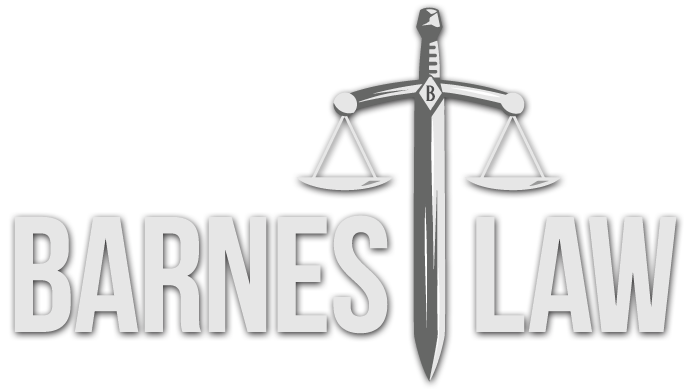Uber Lesson #1: Employee vs. Independent Contractor
Ride sharing has become increasingly popular in major cities across the United States, as technological advances have brought smartphones with internet and user-friendly app services to the palms of our hands. Ride sharing companies, such as Uber, have changed the way many of us commute, leaving the use of taxis a relic in many of our minds. Looking at the many lawsuits that have been filed against Uber in the past few years sheds light on some interesting legal issues that may plague new businesses in our tech-dependent world. For instance, all business owners should become aware of the difference between an employee (W-2) and an independent contractor (1099), as misclassifying your staff can be a costly mistake.
In September 16, 2014, Uber driver Barbara Ann Berwick filed a wage complaint with the California Labor Commissioner seeking, among other things, reimbursement for business expenses (mostly gas and bridge tolls). Uber took the position that as an independent contractor, it was not obligated to reimburse Ms. Berwick for her business expenses. While some states (such as New York, Texas, and Georgia) agree with Uber’s practice of classifying its drivers as independent contractors, California did not. In mid-June 2015, the California Labor Commissioner awarded Ms. Berwick over $4000 in business expenses plus interest.[1]
In reaching this decision, the Commissioner applied the 11-factor “economic realities” test adopted by the California Supreme Court in S.G. Borello & Sons, Inc v. Department of Industrial Relations.[2] The 11 factors used to determine whether a worker, such as Ms. Berwick, is an employee or an independent contractor are:
- whether the worker is engaged in an occupation separate and distinct from that of the principal;
- whether the work is part of the regular business operations of the principal;
- whether the work being done is of the kind that doesn’t require direction or supervision by the principal;
- whether the worker has an opportunity for profit or loss in the business;
- how the worker is paid, whether by the hour or by job;
- who provides the tools, materials, and equipment for performing the work;
- whether the worker has invested in any equipment or materials to perform the work;
- whether the work requires a special skill;
- how long the services are to be performed;
- how permanent the relationship is; and
- whether the parties believe that they have created an employment relationship.[3]
Uber argued that it did not exert sufficient control over its drivers, since they could set their own hours, were not supervised, and could refuse to accept customers. However, the Labor Commissioner found not only that Uber had strong control over the overall business operations, but also that detailed control over its drivers was necessary given the nature of the work and services Uber provides. In finding that Ms. Berwick was an employee of Uber, the Labor Commissioner noted that drivers were not involved in an occupation that was separate and distinct from Uber’s core business; instead, drivers were essential to Uber’s business operations. The Commissioner also found that Uber gave iPhones to its drivers, monitored approval ratings by customers, and deactivated their accounts if a driver was inactive for 180 days or if a driver’s ratings fell below 4.6 stars. The Commissioner further found that Uber had sole discretion to set and negotiate the prices paid by customers, and the service provided did not require a unique or special skill set. Finally, the Labor Commissioner pointed out that California law presumes that a worker providing personal, not business, services is an employee, shifting the burden of proof of independent contractor status to the employer.[4] Uber then appealed this ruling.
Ms. Berwick’s lawsuit is just one of many lawsuits Uber has and will face, where drivers claim to have been misclassified as independent contractors.[5] Perhaps states will continue to divide on the issue, but the decisions made in these types of cases will affect many business owners. Notably, one of the reasons Uber has been successful is its low overhead. However, before you rush to classify your workers as independent contractors to save on your overhead, think carefully and take the time to make the analysis of whether your staff are employees or independent contractors lest you end up losing more in litigation expenses than making that mistake is worth.
Read more here:
- California Labor Commission Office: http://www.dir.ca.gov/dlse/faq_independentcontractor.htm
- “Are You an Employee or Independent Contract under California Law?” http://www.nolo.com/legal-encyclopedia/are-you-employee-independent-contractor-under-california-law.html
- U.S. Department of Labor, Wage & Hour Division, Fact Sheet #13: http://www.dol.gov/whd/regs/compliance/whdfs13.htm
— By Keobopha Keopong Esq., Barnes Law
Keo Keopong is an associate attorney with Barnes Law, and is licensed to practice law in California.
The opinions expressed are those of the author and do not necessarily reflect the views of the firm, its clients, or any of its or their respective affiliates. This article is for general information purposes and is not intended to be and should not be taken as legal advice.
[1] http://digitalcommons.law.scu.edu/cgi/viewcontent.cgi?article=1988&context=historical; http://www.huffingtonpost.com/2015/06/17/uber-drivers-lawsuit_n_7603630.html
[2] S.G. Borello & Sons, Inc v. Department of Industrial Relations (1989) 48 Cal.3d 34.
[3] http://digitalcommons.law.scu.edu/cgi/viewcontent.cgi?article=1988&context=historical
[4] http://digitalcommons.law.scu.edu/cgi/viewcontent.cgi?article=1988&context=historical
[5] A class action lawsuit that will determine whether Uber drivers are independent contractors or employees was scheduled to start on June 20th. http://www.theverge.com/2016/4/17/11447436/uber-lyft-san-francisco-fee; http://www.motherjones.com/politics/2015/12/uber-lawsuit-drivers-class-action-shannon-liss-riordan. 4/22/16: Uber settles two class actions in California & Massachusetts for $100 million and won't have to treat drivers as employees. http://www.npr.org/sections/thetwo-way/2016/04/22/475210901/uber-settles-two-lawsuits-wont-have-to-treat-drivers-as-employees
